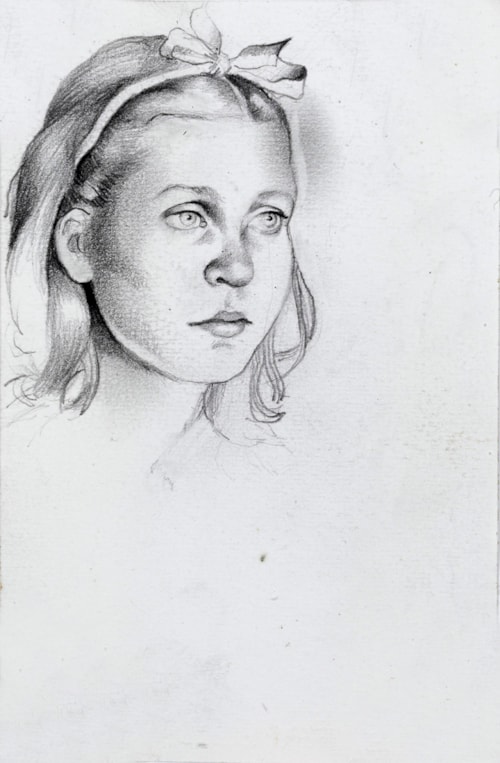
Tamara de LEMPICKA
Warsaw 1898 - Cuernavaca 1980
Biography
Born in Poland to upper class parents, Tamara Gurwik-Gorska was educated in Switzerland and settled with her family in St. Petersburg in 1914. Two years she married a young lawyer, Count Tadeusz Lempicki. In 1918, fleeing the Bolshevik revolution, the couple moved to Paris, where she was to live for the next twenty years. She began studying with Maurice Denis and André Lhote, who was to be a particular influence on her painting style, and adopted the name Tamara de Lempicka. Her first paintings were sold in 1922 at the Galerie Colette Weill, and in the same year she exhibited for the first time at the Salon d’Automne in Paris. De Lempicka was to show yearly at the Salon d’Automne and the Salon des Indépendants, where her work was greatly admired. A one-woman exhibition at the Bottega di Poesia in Milan in 1925 was equally successful with critics and collectors.
The late 1920’s and early 1930’s found the artist at the height of her career, enjoying an exalted position in Parisian society and exhibiting her portraits at the Galerie Colette Weill in Paris. In 1932 the Musée de Luxembourg acquired one of her paintings for 8,000 francs, and the following year she married her second husband, Baron Raoul Kuffner de Dioszegh. The second half of the 1930’s saw a dramatic reduction in her output, largely due to bouts of depression, and during this period her paintings tended towards subjects of a religious or rustic nature.
After recovering her health in 1938, she decided to relaunch her career in America, and early in 1939, shortly before the outbreak of war, De Lempicka and Kuffner left Europe and sailed to New York, where the artist had her first major American exhibition at the Paul Reinhardt Gallery. The following year the couple settled in Los Angeles, and De Lempicka once again enjoyed a busy social life in Hollywood. A large retrospective exhibition of her work at the Julien Levy galleries in New York and Los Angeles in 1941 and 1942 served to secure her artistic reputation in America. The Kuffners moved to New York in 1942, and after the war De Lempicka began to travel extensively around Europe, as well as visiting Cuba and Mexico. Her work of the postwar period, however, achieved little public recognition or success, and she refused to exhibit her work after 1962, though she continued to paint for a few more years. Tamara de Lempicka’s work began to be rediscovered in the early 1970’s, a few years before her death in Mexico in 1980.



